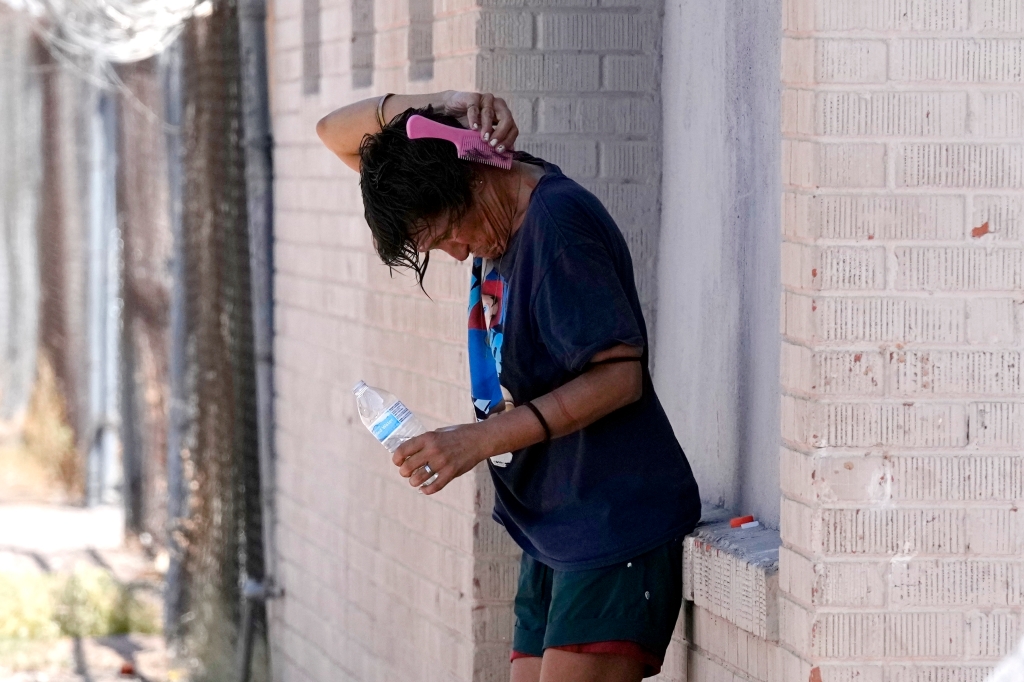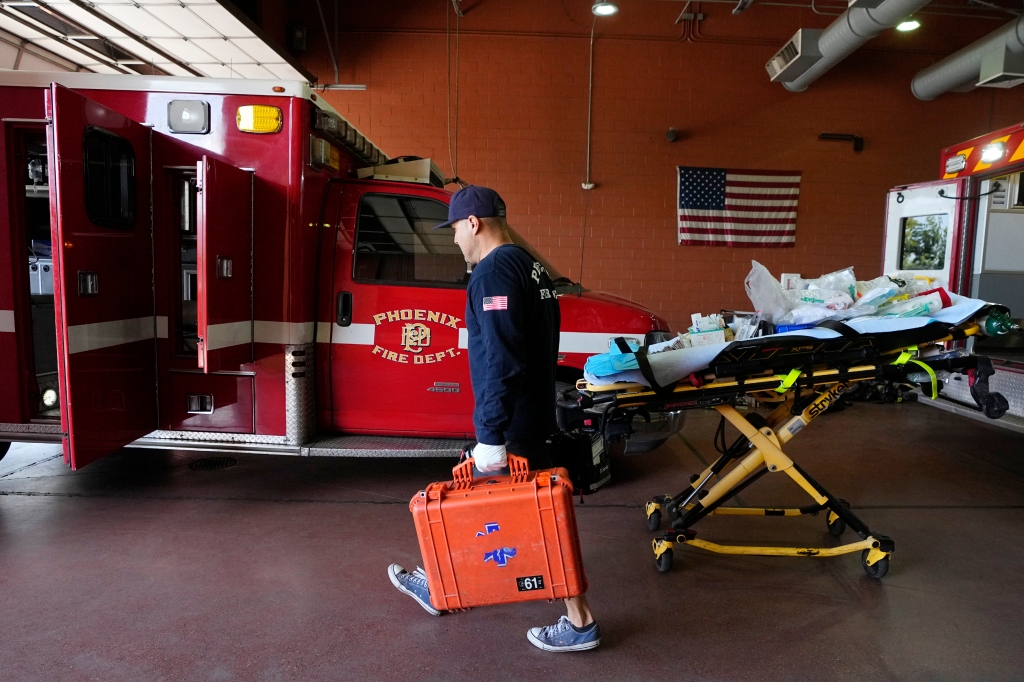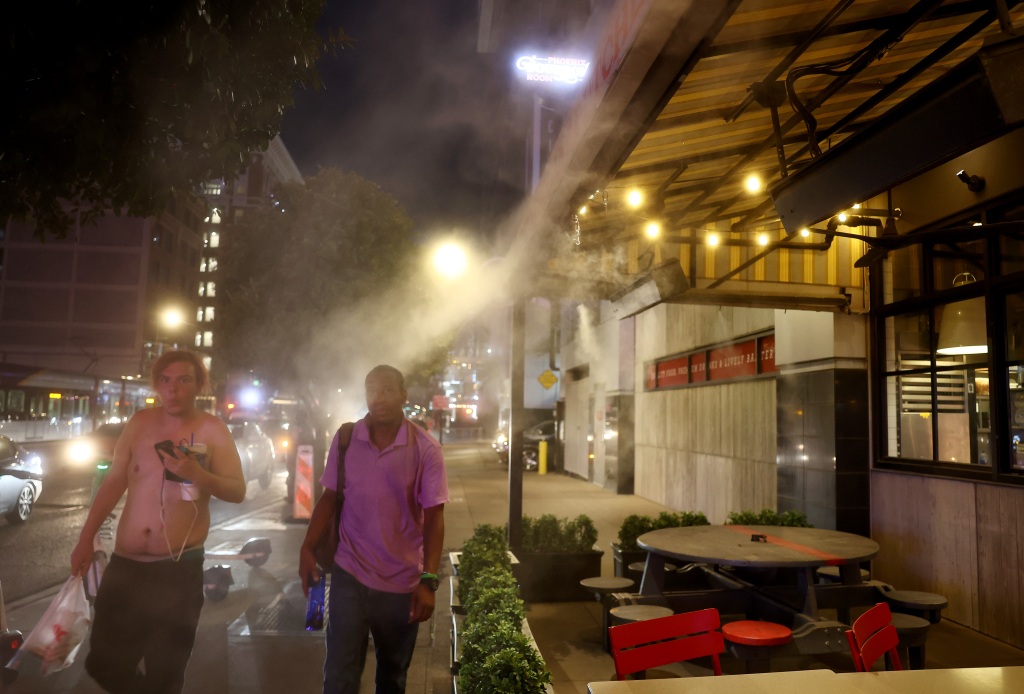Doctors see more heat-related illnesses in outdoor workers as heat wave drags on
Every summer, as temperatures rise, Phoenix-area doctors begin seeing more patients with heat-related symptoms but a deadly heat wave entering its fourth week with temperatures above 110 degrees is taking its toll on even the most heat-acclimated populations.
Temperatures have been sweltering since early June, beginning in Texas.
Then a ridge of high-pressure parked its breaks over the Southwest in July, and the heat has not let up across the region for weeks.
Phoenix Sky Harbor International Airport has hit at least 110 degrees for 25 days straight.
“Due to the duration of this and just the extended period of time, we are seeing more than our usual volume of heat-related illnesses this year than we have in previous summer seasons,” said ValleyWise Health Chief Medical Officer Dr. Michael White. “I count that again due to this longer duration of the time where the temperatures have just been so extreme.”
ValleyWise Health serves the Phoenix area, and White said cases of heat stroke or heat-related illnesses are on the rise as the heat wave drags on.
“Especially as we get later and later into this, so where we’re seeing that volume increase, though, certainly the number of encounters, the number of patients that are seeking emergency services has also increased over this time as well, which again, leads us to more downstream, an increased number of hospitalizations to heat-related illnesses,” White said.
The deadly U.S. heat wave is causing an increase in heat stroke and heat exhaustion patients across the country and not just in more vulnerable populations.

Workers who know how to manage hot temperatures are the ones on the frontlines of this heat wave.
White said they are still seeing those from unsheltered populations and people more at risk of heat, but this year, the emergency department is treating people who don’t normally come in during the summer months.
“It’s likely this duration that we’re seeing; it’s the number of times people are being exposed to this intense heat,” White said. “So those folks that tend to work outside all day are folks that work in construction or folks that work on landscaping and things. We are seeing more of those individuals this year than we have in previous years.”

In Central Florida, AdventHealth Centra Care Medical Director Dr. Tim Hendrix said he is usually ready to talk about heat exhaustion in early summer.
“The season of risk of heat exhaustion is getting longer, and Florida used to only be in June. We would see a lot of heat exhaustion coming in because June is that time when it’s dry, it’s hot, and there’s not a lot of cloud cover,” Hendrix said.
Florida has experienced scalding feels-like temperatures in the triple digits throughout July.

There is no cool dip in the ocean to provide a respite for the heat wary.
Sea surface temperatures have turned the Atlantic and Gulf into a bathtub with 97-degree water temperatures in the Florida Keys.
AdventHealth’s more than 50 urgent care locations will see tourists coming to the Orlando area for its theme parks during summer vacation unprepared for the heat and suffering from heat exhaustion.

This year, Hendrix said the heat health concerns are coming from a different group.
“What we’ve been seeing more of in our Centra Care locations is people coming in that are outdoor workers, those people that are working out in the heat,” Hendrix said.
If you think construction crews or other people who spend the majority of their time outdoors are more prone to heat illnesses, those are actually the people most immune to hot weather.

“Their bodies are acclimated to that temperature,” Hendrix said. “But what we see is now just because just every day it’s just hot, and then the temperatures are higher than normal, the humidity is high that even the outdoor workers who can pretty much manage it are succumbing to the heat.”
In the two weeks since July 4, heat-related patients coming into AdventHealth Centra Care locations across Central Florida doubled.
Inflatable pools of ice and cold IV fluids
When a heat stroke victim is brought into Valleywise Health, emergency medical teams work quickly to cool the person’s body temperature, sometimes from as high as 106 degrees.

“We begin to do things to help people actively cool, whether that’s cold blankets and things that are soaked in water that we place across the patients,” White said. “We have some things that we can place on our beds to put in, actually put ice around our patients to help them cool, cool and cool rapidly.”
Sometimes patients are placed in an inflatable-pool type bed filled with ice and given cold IV fluids.
The goal is to bring their body temperatures down within the first 30 minutes to an hour.
Depending on how long someone has been exposed to heat, there could be lasting effects on multiple organs.
“As people’s body temperature rises, we start to see issues with muscle breakdown, with issues that may develop problems with their hearts, with their kidneys, with their lungs,” White said.
Some patients may recover quickly without long-term issues.

Meanwhile, others may need to be hospitalized for a while.
White said at the extremes of age, very young or older populations don’t have as much resilience to heat-related issues, but the unrelenting heat wave has been dangerous to people of all ages.
“With the temperatures the way they’ve been and certainly the duration that we’ve seen, we’ve seen that across the age continuum,” White said.
Medical community prepares for extreme heat
According to the World Meteorological Organization, heat is among the deadliest weather-related causes.
Dozens of heat-related deaths have been reported across the country, including 18 in Maricopa County, Arizona, and 15 across Texas.
Fourteen children have died this year from being left in hot vehicles.
Medical communities are preparing for more extreme heat waves, and both doctors who spoke to FOX Weather said communicating those risks will be vital.
“Don’t think that just by drinking water all day long and walking around amusement parks is going to keep you from getting heat exhaustion,” Hendrix said. “The things we do outdoors that raise our body temperature, like exercising and working, those metabolic processes will increase your body temperature normally, but then you’ve got this heat burden of the sun bearing down on you. The temperature’s high; the humidity is high. All those things are going to work against you and elevate your body temperature.”
This means planning carefully in the summer months.
Hendrix said don’t wait until noon to mow the lawn, and if you have a day planned at Disney World, add time for breaks in the air conditioning.
White said it’s also about protecting workforces exposed to extreme temperatures.
“Can we shift it so people are working earlier in times when it’s not out in the heat of the day doing some of those things?” White said. “So we’re able to protect folks in these types of environments.”
Read the full article Here


